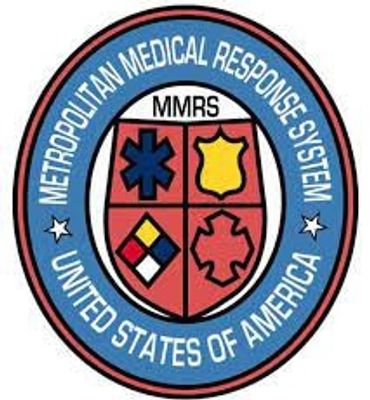MMRS National Leadership Group
The Metropolitan Medical Response System National Leadership Group (NLG) is dedicated to research and education for all MMRS jurisdictions in the United States. Even though FEMA decided not to continue to fund the MMRS program through the US DHS Homeland Security Grant Program, the work of MMRS programs continues on a daily basis, but the capabilities built since 1996 are in jeopardy and, therefore, we are all at greater risk.
It is commonly understood that all disasters, whether natural or intentional:
- Begin and end locally
- Regardless of cause, disasters produce human casualties
These two axioms serve as the basis for all medical and public health preparedness efforts.
Other than the Metropolitan Medical Response System (MMRS) program, all federal grant programs designed to address the health and medical consequences of disasters bring federal dollars down to the state level to support public health and medical preparedness. These grant-funded programs rely on the individual states to be astute enough to include local jurisdictions in the planning process. Historically, however, the results of attempts at state to local cooperation have been inconsistent at best.
With an increase in terrorist attacks worldwide by 43% since 2012 (US State Department) the significance of the MMRS can hardly be overstated. Approximately 80% of the US population in metropolitan areas benefits from MMRS public health and emergency medical preparedness measures, either directly or as a result of collaborative local and sub-state regional planning efforts.
Federal funding to the states often results in:
- Incomplete and largely uncoordinated, disaster planning at the local level
- Less meaningful local impacts in patient outcomes
In contrast, MMRS, the oldest and most established of these programs, has been unique from its inception. First and foremost, the MMRS program was designed specifically to:
- Bring federal dollars to the local level
- Ensure planning for the health consequences of all disasters could be effectively developed where the impact of disastrous events is felt the most
The MMRS is not simply an abstract planning grant; the MMRS has been one of the few Department of Homeland Security programs that have improved the human casualty factor in disasters of any origin.
The 124 individual MMRS jurisdictions, first under contract with local municipalities, and then according to federal grant requirements, were the first to foster local and sub-state regional cooperation and collaboration among local public health and medical stakeholders to ensure that local response plans were comprehensive and inclusive.
MMRS pioneering efforts include:
- Bringing traditional emergency response agencies (fire, police, EMS) to the planning table along with hospitals, public health agencies, behavioral health specialists and faith-based entities
- Developing plans for biological, chemical, and radiological concerns, as well as for MCIs in general, that are not specific to one agency, jurisdiction, or discipline, but are designed to encourage all the players to work together.
- Specially designed support for diverse organizations from the Red Cross to Bomb Squads, which might not be available from any other granting agency
- Developing programs and standards for Mass Decontamination
- ONLY program that supports EMS domestic preparedness and mass casualty response
- Integration of emergency medical services with law enforcement for Active Shooter responses
- Bringing triage materials, planning, training, and exercises under one grant program
The MMRS program, when properly funded, has been the only program to put chemical antidotes into the hands of first responders within seconds of a potential exposure and without the inherent delay of the CHEMPACK program. As part of a modest funding scheme of $320,000 per MMRS jurisdiction, over 10,000 first responders and household family members can be protected with medical counter measures. No other grant program includes this coverage aimed at "Protecting the Protectors".
Through distinct local application MMRS performance and effectiveness are not determined by vague or excessively broad national standards trying to make one size fit all. Instead the MMRS wisely uses federal grant dollars to support and enhance local planning that best fit local needs. The results of MMRS program investments have remained durable beyond the de-funding of the MMRS as a stand-alone grant program, and the very diversity of the program’s impact at the local level is to be celebrated rather than criticized.
Today, the atmosphere of cooperation, collaboration and communication among medical and public health stakeholders created by and supported through the MMRS program largely continues in the communities that participated in the 124 MMRS jurisdictions. However, it is reasonable to assume that, with the loss of MMRS funding, continued planning for public health and medical services response to disasters will occur at the state and federal level, and not appreciably at the level of the local municipalities, where the planning is most needed and can be most effective.
Specific responses and support from the MMRS for real-world incidents include:
- COVID-19 Pandemic
- 2019-2020 Civil Unrest
- Dayton, OH Oregon District Mass Shooting 2019
- Memorial Day Tornado Cluster, Dayton, OH 2019

Copyright © 2024 MMRS National Leadership Group - All Rights Reserved.
Powered by GoDaddy
